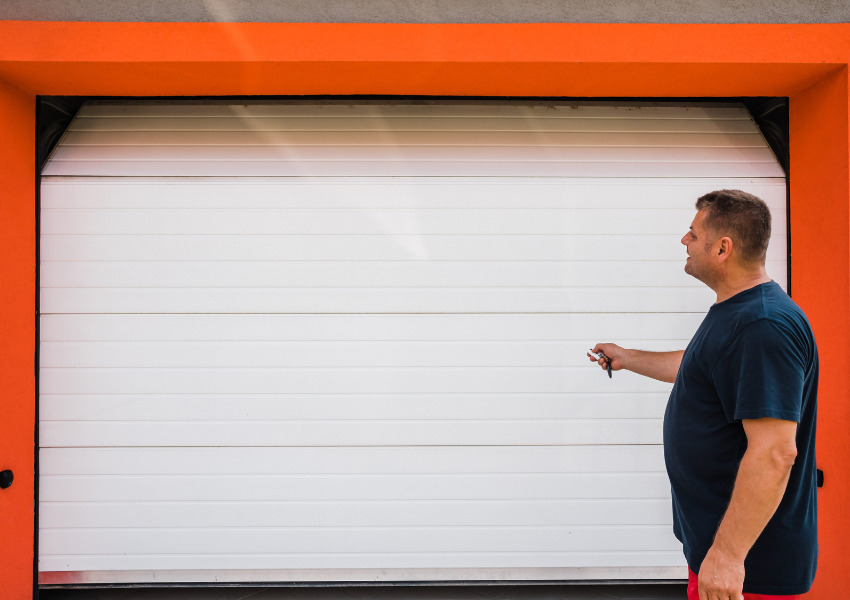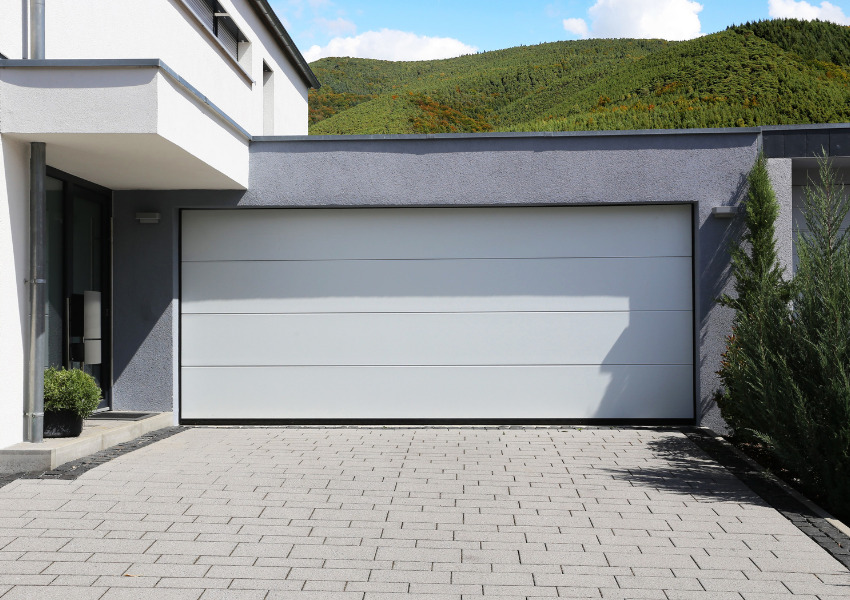Diving into the Lifespan Variations of Garage Doors: A Closer Look
Are you tired of constantly repairing or replacing your garage door? Do you find yourself wondering which type of garage door will provide the longest lifespan? Understanding the lifespan of different garage door types is crucial to making an informed decision when choosing a new one for your home.
Sectional, roll-up, side-hinged, and tilt-up are the four main types of garage doors available on the market. Each has its own unique features and advantages, but they also vary in terms of durability and longevity.
By understanding the differences between these types of doors and considering factors that impact their lifespan, you can choose a garage door that will give you peace of mind while also enhancing your home’s curb appeal.
So why settle for a subpar garage door when you can make an investment that will last for years to come?
Key Takeaways
– The lifespan of garage door types varies depending on proper maintenance, protection from harsh weather conditions, quality of installation, and environmental factors such as humidity, temperature changes, and exposure to sunlight.
– Regular inspection and lubrication of components such as springs, cables, rollers, hinges, and tracks can extend the lifespan of garage doors.
– Choosing the right garage door material, insulation, style, and security features can also affect its lifespan.
– Tilt-up doors tend to last longer than sectional doors due to fewer moving parts, while roll-up doors may show signs of wear and tear with rusted or warped panels, excessive noise, or difficulty opening/closing. Side-hinged doors require regular cleaning and lubrication of hinges and tracks to prevent rust buildup and ensure smooth operation, while wooden tilt-up doors require regular maintenance to prevent rotting and warping. Steel doors can rust if not properly cared for, and fiberglass doors are lightweight and resistant to dents but may crack over time due to extreme temperatures.
Sectional Garage Doors
If you’re looking for a low-maintenance option for your garage door, sectional doors are a great choice because they require minimal upkeep compared to other types.
Sectional garage doors consist of panels that are connected with hinges and roll up vertically along tracks when opened. They can be made from different materials such as steel, aluminum, wood or vinyl and come in various styles to suit any home design.
The life expectancy of sectional garage doors varies depending on the material used, but typically they can last anywhere from 15-30 years with proper maintenance.
Regular cleaning and lubrication of moving parts can help prolong the life of your sectional garage door. Additionally, it’s important to check for any damages or wear and tear regularly to ensure that the door is functioning properly and avoid costly repairs down the line.
Overall, sectional garage doors are a reliable and long-lasting option for homeowners in need of a new garage door.

Roll-Up Garage Doors
You’ll love the convenience and durability of roll-up doors for your garage. These types of garage doors are made from steel or wood, which means they can withstand harsh weather conditions and last for a long time.
Here are some benefits of having roll-up garage doors:
– Space-saving: Roll-up doors don’t swing outwards like other types of garage doors, which means you won’t need to worry about leaving extra space in front of your garage.
– Easy to operate: Most roll-up doors come with an automatic opener, so you won’t have to manually lift the door when opening or closing it.
– Increased security: Roll-up doors are harder to break into compared to other types of garage doors due to their sturdy construction.
However, even with these benefits, it’s important to keep an eye on the signs of wear and tear that may indicate it’s time for a replacement. Common signs include rusted or warped panels, excessive noise during operation, and difficulty opening or closing the door.
By regularly maintaining your roll-up garage door and addressing any issues promptly, you can help extend its lifespan.
Side-Hinged Garage Doors
Don’t miss out on the charm and traditional style that side-hinged garage doors can bring to your home. These garage doors are made up of two panels that swing open from the center, offering a classic look that is perfect for homes with a vintage or rustic aesthetic.
Side-hinged garage doors come in various materials, including wood, steel, and aluminum. With proper maintenance, these types of garage doors can last up to 30 years or more. If you’re looking for durability, side-hinged garage doors are a great option.
They’re sturdy and built to withstand harsh weather conditions such as heavy rain, snowstorms, and high winds. However, it’s important to have a maintenance plan in place to keep them functioning properly throughout their lifespan. Regular cleaning and lubrication of hinges and tracks will help prevent rust buildup and ensure smooth operation.
By investing in side-hinged garage doors for your home, you can enjoy both the beauty and functionality they offer for many years to come.
Tilt-Up Garage Doors
When choosing a tilt-up garage door, it’s important to consider the space required for the door to tilt outwards and upwards. This type of garage door is made from a single panel that tilts up and slides along the ceiling of your garage when opened. This means that you can park your car close to the door without worrying about hitting it when you open or close it.
Tilt-up garage doors are typically made from wood, steel, or fiberglass. Each material has its own advantages and disadvantages in terms of durability, maintenance tasks, and overall lifespan. Wooden tilt-up doors look great but require regular maintenance to prevent rotting and warping. Steel doors are durable and low-maintenance but can rust if not properly cared for. Fiberglass doors are lightweight and resistant to dents but may crack over time due to exposure to extreme temperatures.
On average, a well-maintained tilt-up garage door can last for 15-20 years before needing replacement.
Factors Impacting Garage Door Lifespan
Proper maintenance and protection from harsh weather conditions play a pivotal role in prolonging the life of your garage gate. In addition to regular maintenance, the type of garage door and quality of installation are also significant factors that impact its lifespan.
For instance, tilt-up garage doors tend to last longer than sectional garage doors because they have fewer moving parts. Another critical factor is the quality of installation. If the installer doesn’t follow proper procedures or uses low-quality materials, it can significantly reduce your garage door’s lifespan.
Furthermore, environmental factors such as humidity, temperature changes, and exposure to sunlight can cause wear and tear on the garage door springs and other components over time. Therefore, it’s essential to choose a reliable installer like garage door repair – servicing Caboolture who uses high-quality materials and regularly maintains your garage door to ensure it lasts for years to come.
Maintenance Tips for Prolonging Garage Door Life
To keep your garage door functioning at its best and to prolong its lifespan, regular maintenance is essential. Start by checking all the components of your garage door, including the springs, cables, rollers, hinges, and tracks. Inspect them for any damage or signs of wear and tear.
Lubricate the moving parts with a silicone spray to prevent rusting and ensure smooth operation. It’s also important to keep your garage door clean from dirt, debris, and other obstructions that can cause damage to the components.
Regularly wipe down the surface of your garage door with a mild soap solution and rinse it thoroughly with water. Avoid using harsh chemicals that can corrode the door’s finish. By following these simple maintenance tips, you can significantly increase the durability of your garage door and avoid costly repairs in the future.

Choosing the Right Garage Door for Your Needs
Now that you know how to maintain your garage door to prolong its lifespan, it’s time to consider if it’s the right type for your needs. Choosing the right garage door can make a huge difference in terms of durability and functionality. You want a door that will not only last long but also provide you with the freedom to use your garage space effectively.
To help you make an informed decision, here are four factors to consider when choosing the right type of garage door for your needs:
1. Material: Consider which material is best suited for your climate and aesthetic preferences.
2. Insulation: If you plan on using your garage as a workspace or storage area, insulation is crucial for comfort and energy efficiency.
3. Style: Garage doors come in various styles such as traditional, carriage house, contemporary, etc., so choose one that complements your home’s architecture.
4. Security Features: Look for doors with added security features such as tamper-resistant hinges and solid-core construction to protect against break-ins.
By taking these factors into account when selecting a garage door, you can ensure that it meets both your practical needs and personal style preferences while lasting for years to come.
Frequently Asked Questions
What is the average cost of installing a garage door?
Looking to install a garage door? The average cost ranges from $500-$1500, depending on the type and materials used. Don’t let high prices hold you back from achieving convenient access to your vehicle with just one click!
Can I install a garage door myself or should I hire a professional?
You can install a garage door yourself, but it’s not recommended unless you have experience. Hiring a professional ensures safety and proper installation. Plus, they can provide guidance on choosing the right type of door for your home.
Is it safe to use my garage door during a power outage?
Power outages pose potential safety risks when operating a garage door. Ensure the release cord is functional and manually operate the door, avoiding any electrical components. Protect your family by staying informed and prepared.
Can I paint my garage door to match the color of my house?
Yes, you can paint your garage door to match the color of your house. Make sure to use a high-quality exterior paint and prepare the surface by thoroughly cleaning and priming it. Regular maintenance will ensure long-lasting results.
What is the maximum weight limit for a garage door opener?
You need to ensure that your garage door opener can handle the weight of your door. Most openers have a maximum limit of 500 pounds, but it’s best to check with the manufacturer for specific details. Don’t risk damaging your opener and losing convenience.
Conclusion
Congratulations! You’ve just gained a wealth of knowledge on the lifespan of different garage door types. From sectional to roll-up, side-hinged to tilt-up, you now understand the key features and unique characteristics of each type.
But what can you do to prolong the lifespan of your garage door? Remember, regular maintenance is crucial in keeping your garage door functioning properly. Lubricating moving parts, checking for worn-out components, and ensuring proper alignment are just some of the tasks that should be carried out periodically.
So when it comes to choosing a garage door that fits your needs, consider all factors such as material durability, security features, and energy efficiency.
Now armed with this information, go forth and make an informed decision that will guarantee not only longevity but also convenience and safety for you and your family.

